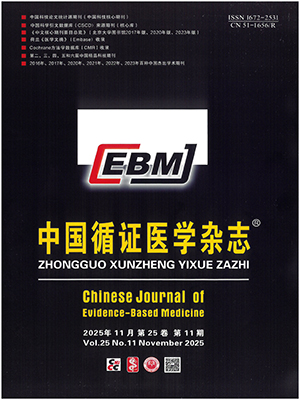Evidence-informed decision making is one of the most common, objective and important health policy research methods used by policy makers. Its purpose is to promote the application and dissemination of research knowledge on health policy and systems to change traditional and subjective models of health policy making in order to improve national and regional health systems. Three elements will influence the effectiveness of health policy making:research evidence, available health resources and the value of policy formulation. This paper introduces some pragmatic evidence-based approaches, especially systematic reviews, priority setting and a combined approach matrix (CAM). Systematic reviews have a b impact on the decision process for policy makers. We hope that the application and development of evidence-informed methods will increase in China’s health policy research.
Citation:
HU Shanlian. The Introduction to Research Methods on Evidence-Informed Policy Making. Chinese Journal of Evidence-Based Medicine, 2007, 07(2): 142-146. doi:
Copy
Copyright ? the editorial department of Chinese Journal of Evidence-Based Medicine of West China Medical Publisher. All rights reserved
| 1. |
Alliance for Health Policy and Systems Research: Newsletter. No.12, October, 2006.
|
| 2. |
WHO/AHPSR: Knowledge for Better Health Systems and Better Health: The Alliance Strategic Plan: 10-Year Outlook and 2006-2008 Plan. WHO 2006.
|
| 3. |
Schouwstra M, Ellman M: A New Explanatory Model for Policy Analysis and Evaluation. Tinbergen Institute Discussion Paper. http://www.tinbergen.nl.
|
| 4. |
Ghaffar A: Three Pillars of Priority Setting for Health Research: Process, Tools and Values. Global Forum Update on Research for Health. 3:117-121. edited by Stephen Matlin. 2006.
|
| 5. |
Ghaffar et al: The Combined Approach Matrix: A Priority-setting Tool for Health Research. Global Forum for Health Research. Geneva. Switzerland. 2004.
|
- 1. Alliance for Health Policy and Systems Research: Newsletter. No.12, October, 2006.
- 2. WHO/AHPSR: Knowledge for Better Health Systems and Better Health: The Alliance Strategic Plan: 10-Year Outlook and 2006-2008 Plan. WHO 2006.
- 3. Schouwstra M, Ellman M: A New Explanatory Model for Policy Analysis and Evaluation. Tinbergen Institute Discussion Paper. http://www.tinbergen.nl.
- 4. Ghaffar A: Three Pillars of Priority Setting for Health Research: Process, Tools and Values. Global Forum Update on Research for Health. 3:117-121. edited by Stephen Matlin. 2006.
- 5. Ghaffar et al: The Combined Approach Matrix: A Priority-setting Tool for Health Research. Global Forum for Health Research. Geneva. Switzerland. 2004.




